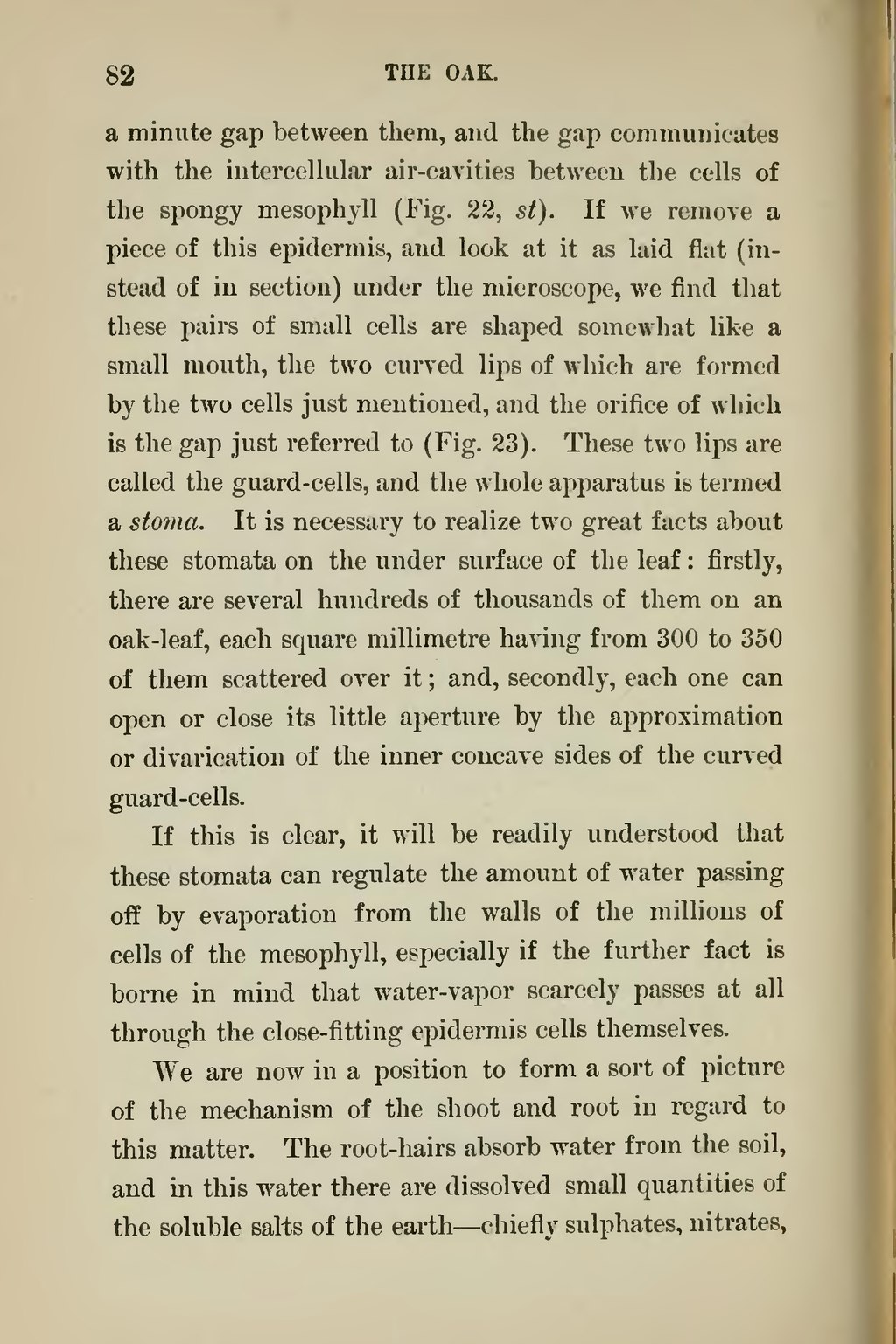a minute gap between them, and the gap communicates with the intercellular air-cavities between the cells of the spongy mesophyll (Fig. 22, st). If we remove a piece of this epidermis, and look at it as laid flat (instead of in section) under the microscope, we find that these pairs of small cells are shaped somewhat like a small mouth, the two curved lips of which are formed by the two cells just mentioned, and the orifice of which is the gap just referred to (Fig. 23). These two lips are called the guard-cells, and the whole apparatus is termed a stoma. It is necessary to realize two great facts about these stomata on the under surface of the leaf: firstly, there are several hundreds of thousands of them on an oak-leaf, each square millimetre having from 300 to 350 of them scattered over it; and, secondly, each one can open or close its little aperture by the approximation or divarication of the inner concave sides of the curved guard-cells.
If this is clear, it will be readily understood that these stomata can regulate the amount of water passing off by evaporation from the walls of the millions of cells of the mesophyll, especially if the further fact is borne in mind that water-vapor scarcely passes at all through the close-fitting epidermis cells themselves.
We are now in a position to form a sort of picture of the mechanism of the shoot and root in regard to this matter. The root-hairs absorb water from the soil, and in this water there are dissolved small quantities of the soluble salts of the earth—chiefly sulphates, nitrates,
